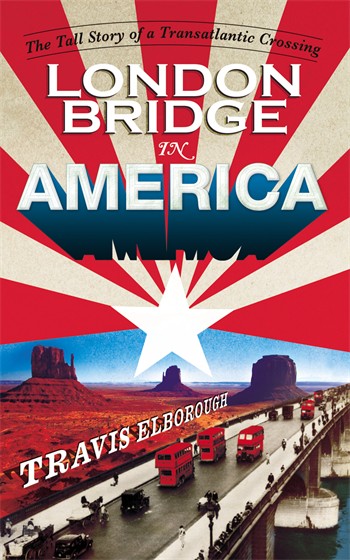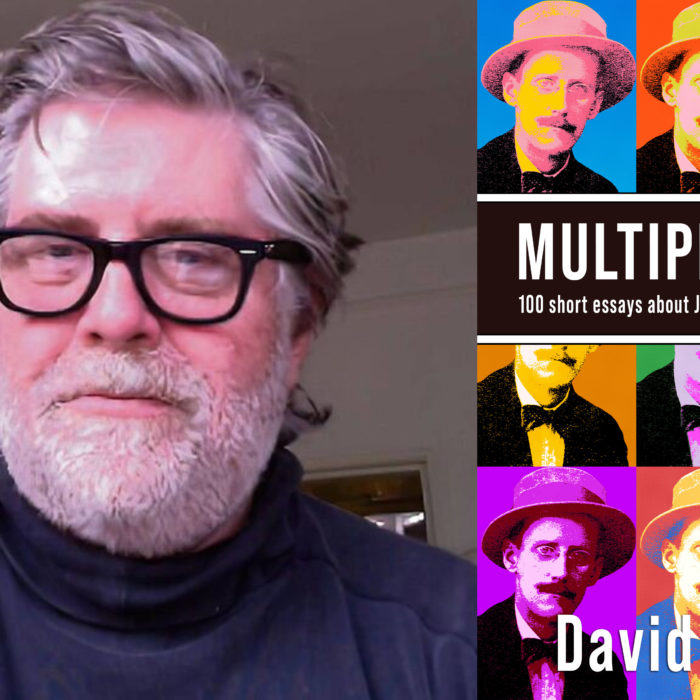You have no items in your cart. Want to get some nice things?
Go shopping In 1968, at the height of America’s fascination with the Swinging Sixties, perhaps the most bizarre event in the history of the “special relationship” took place: the sale of London Bridge to an eccentric Missourian entrepreneur. Eager to secure an attraction to put his hometown, Lake Havasu City, on the map and capitalise on the growing US fascination with England, Robert P. McCullouch shipped the 130-year-old bridge some 3000 miles to the middle of the Mohave desert. In London Bridge in America: The Tall Story of a Transatlantic Crossing, (Jonathan Cape, Feb 2013) Travis Elborough unpicks the myth surrounding the transaction.
In 1968, at the height of America’s fascination with the Swinging Sixties, perhaps the most bizarre event in the history of the “special relationship” took place: the sale of London Bridge to an eccentric Missourian entrepreneur. Eager to secure an attraction to put his hometown, Lake Havasu City, on the map and capitalise on the growing US fascination with England, Robert P. McCullouch shipped the 130-year-old bridge some 3000 miles to the middle of the Mohave desert. In London Bridge in America: The Tall Story of a Transatlantic Crossing, (Jonathan Cape, Feb 2013) Travis Elborough unpicks the myth surrounding the transaction.
By way of exploring how the sale came about, Elborough’s fourth book delivers a partial history of London, and a run-down on Anglo-American relations. It’s a grand scope, and Elborough explains that his fascination with the story began in childhood. “When we learnt the nursery rhyme about the bridge at school our teacher made a remark about it being sold to America, and my interest was piqued at a young age. When researching my book The Bus We Loved, I discovered a Routemaster had been shipped to the States, and stood at the foot of the bridge serving as an ice cream parlour, which got me thinking about the whole story again.”
Once he began to delve into the research, Elborough was thrilled at the bizarre characters which emerged, particularly that of Robert P. McCullouch. “He has no contemporary counterpoint. He was a pre-venture capitalist businessman, driven not by money, but a very distinct and wild form of bravado. He spent years working on an ill-fated ‘gyroplane’ (a hybrid combination of a helicopter and aeroplane). He was eccentric, almost to the level of a Bond villain, although with more benign intentions.”
In the course of researching the book, Elborough visited McCullough’s Lake Havasu City, which he found a distinctly surreal experience. “You drive across Route 95, with the Wimpole mountains in the distance. In this barren landscape is a man-made lake, which looks in that setting a lot like a mirage. And then you see the bridge, which is actually quite elegant in these surroundings. In the extreme, dry heat, the sun goes down very fast, and the bridge reflects the sunlight like a light bulb. What’s strange to see is that it still has original etchings, such as graffiti and people’s army numbers scratched into the surface, and it still has soot clinging to it; it wears its scars.”
The book is dotted with highly evocative references to sounds and songs; from the clangs of iron work as the bridge is being built, to the universally-known nursery rhyme. Having written a book about collecting records (Long Player Goodbye), Elborough notes that whilst music is a personal obsession, the aural references did seem integral to the tale. “It did feel like the story was a very sonorous one. The sale of the bridge in fact inspired a number of pop songs, written by the likes of Spectrum and Bread. I’m not sure what sort of songs the architecture of today’s London Bridge would inspire. Maybe there’s a Kraftwerk number in there.”

The strong and consistent allure that bridges hold over artists is a recurring theme in the book, and one that Elborough attributes to both concrete and metaphorical reasons. “Bridges are the earliest and simplest structures humans have created. During Medieval times they began to have a very strong religious significance, and I think the sheer amount of human endeavour that goes into their building adds to their spiritual meaning. Just look at how many people died during the 30 years building of London bridge, for example. They certainly do tap into something very profound within us all.”
While London Bridge in America is about a number of characters with lofty ambitions often too grandiose to be realised, Elborough doesn’t share their great schemes. “I’m not sure I have such vaulting ideas as someone like McCullouch. My ambition has always been to write books, ever since I was a child. I’m very fond of the book as a physical object, and I’ve been fortunate to have the chance to develop ideas and tell stories in long form, over two or three hundred pages. That’s something I’m very fond of, and I hope to have the opportunity to continue to do so.”
London Bridge in America is published by Jonathan Cape and available now.



